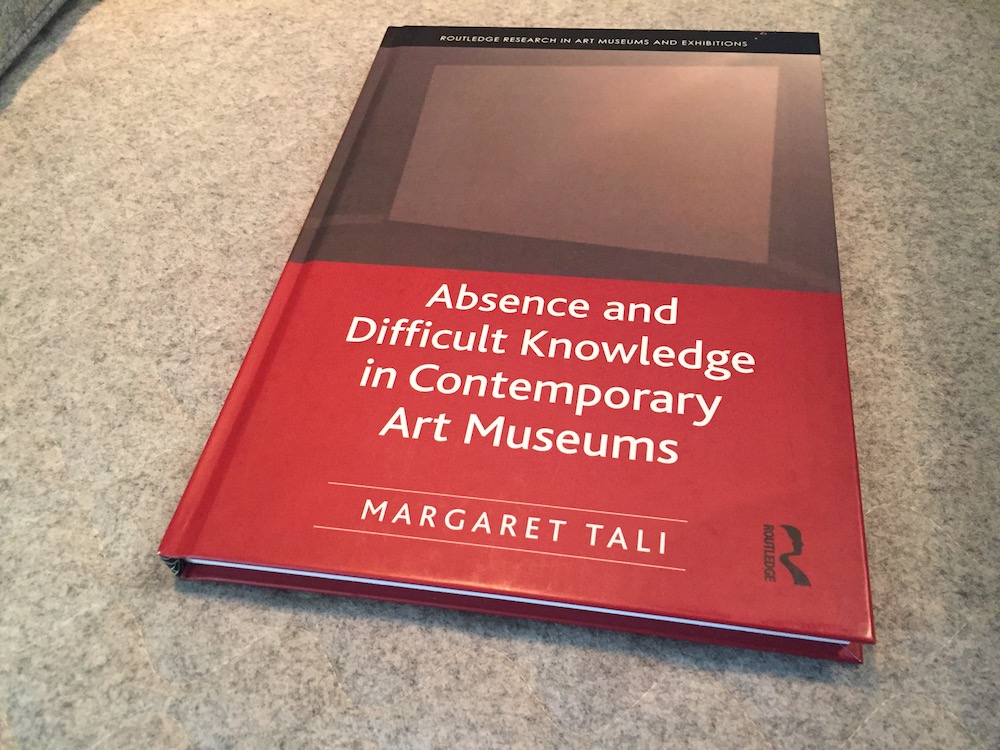I am happy to share the news that my book “Absence and Difficult Knowledge in Contemporary Art Museums” was published in the beginning of 2018. I have been working on it for about 10 years.
The book grows out of a feeling of discomfort about the ambiguity that exists in the art world when dealing with cultural difference – its spectacularisation, commodification, celebration or simply neglect. I was interested in the way local community relations are present in something symbolically so important as collecting art for public museums. I decided to use four European museum collections as my case studies and analyze museum narratives as well as consider the changes in museum structures. These four national art museums are: Kumu museum in Tallinn, Kiasma museum in Helsinki, Ludwig Museum in Budapest, and Hamburger Bahnhof in Berlin. How are local community relations present in what is represented in these museums, and how do they affect the way museums collect art? What do the museums physical structures have to do with their existing collections?
There are two central themes in the book: the growing influence of private collectors (and sometimes also corporations), and the absence of minority artists perspectives in art museums narratives. I theorize this absence and distinguish its three parts as being material, phenomenological and narrative absence. Difficult knowledge is proposed as a way to deal with this absence in collections productively.
I am open to come discuss the themes of the book in educational settings, seminars and conferences.
To download Chapter 6, see here.
